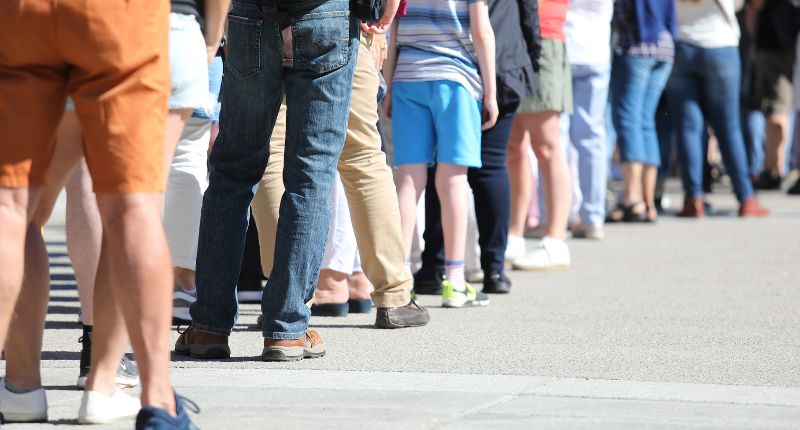
- Rents soared by almost 40% across the pandemic, while wages barely clocked in 20% growth.
- The gap between unit rents and housing rents is quickly closing.
- If early 2024 trends continue, shifting to buying a house could be hard as prices may surge by over 10%.
The Australian rental market has hit renters with some of the worst rental price hikes in over a decade. The cost of renting in Australia has left more and more renters out of pocket, with a dwindling number of rentals considered to be affordable on an average income.
PropTrack’s recently launched Rental Affordability Index has found that a mere 39% of homes listed on realestate.com.au’s platform between July and December 2023 were considered affordable for a typical-income household shelling out 25% of their income on rent.
“Surging rents over the past few years have resulted in rental affordability sitting at its worst level in at least 17 years.”
Angus Moore, PropTrack
In other terms, the data shows that households with a median income of about $111,000 are now able to afford renting the fewest homes on the market since 2008.
“Over the six months to December 2023, households across the income distribution could afford to rent the smallest share of advertised rentals since at least 2008, when our records began. That is a substantial change from conditions before and during the pandemic,” said PropTrack senior economist and report author, Angus Moore.
“The deterioration in affordability has been driven by the significant increase in rents that we’ve seen since the pandemic, which wages have not kept pace with. Rents nationally are up 38% since the start of the pandemic.”
That 38% hike in Australian rental prices is a stark difference to the growth in wages. According to the report, from financial year 2018-2019 to now, national median household income grew 19%.
To an extent, it comes as little surprise that more affordable rentals have also seen the greatest pace of price growth. The 10th percentile is considered to be the most affordable end of the market, and the report found that group of rentals recorded faster growth in rents than those at the more expensive end of the market.
That’s not the only challenge renters are contending with, with the previously safe bet that apartments are more affordable to rent than houses potentially soon to be consigned to the annals of history.
Unit rents closing the gap on houses across the major capitals
While renters feeling the pinch may consider turning their gaze to units and apartments, that choice is quickly becoming more challenging to make.
Research by MCG Quantity Surveyors has uncovered a narrowing rental affordability gap between units and houses across many of Australia’s major capital cities. Sydney, Melbourne and Brisbane rental markets have all seen the rental price difference between units and houses tighten and at an alarming rate.
Housing rents in Greater Sydney were found to have grown from $650 per week in February 2023 to $700 per week in February 2024. However, unit rents in Sydney have rocketed from $540 per week to $650 per week across the same period – a stomach churning $110 per week hike in the cost of renting in Sydney.
Greater Melbourne also saw unit rents deliver an unsteadying blow to renters, up $90 from $430 per week to $520 per week, and Great Brisbane recorded an $80 weekly rent hike from $470 to $550.
“The accelerated growth in unit rents compared to houses suggests a strong demand for more affordable, centrally located living options,” said MCG Quantity Surveroys managing director, Mike Mortlock.
“These trends are not just numbers; they tell the story of Australians’ shifting lifestyle aspirations, with a clear tilt towards higher density living options.”
Mike Mortlock, MCG Quantity Surveyors
Should I buy instead of rent?
That has certainly been in the zeitgeist across the pandemic, particularly as house prices soared substantially. Commentators have broadly floated the odd circumstance or two where mortgage payments and rent were at parity, making it more sensible for some to make the switch.
But what does the market currently look like and how will house prices change across this year?
As 2024 kicked off, the Australian housing market has already recorded a 2.2% growth in house prices, according to Ray White’s Nerida Conisbee. Should that trend continue, Conisbee said Australian house prices could grow by more than 10% by this year.
A quick look back to 2023 shows that house prices grew 9.7% across the year, and unit prices were up 7.4%.
“Growth has accelerated quickly in the first two months of this year. And while last year was characterised by strong price growth in smaller cities, so far this year, it is Sydney and Melbourne,” observed Conisbee.
“The drivers of price growth have been well documented. Population growth was extremely strong last year and we didn’t build enough homes. In 2023, we needed 250,000 new homes but built only 175,000.
“The pipeline is looking even worse.”
Nerida Conisbee, Ray White
She noted that only 163,000 homes have been approved over the past 12 months.
“Even in a more normal construction environment, not all of these homes will be built. Conditions are slowly improving in the construction sector but they won’t be solved this year. Population growth will ease this year, but so too will the number of new homes built,” said Conisbee.
The borrowing environment could be moving in a more favourable direction too, with Conisbee noting: “Monthly inflation came in at 3.4% in the year to January. With the Reserve Bank of Australia aiming for [inflation] between 2% – 3%, the odds of a rate cut are rising. So much so that as of last week, markets were pricing in three cuts over the next 12 months.”
It’s still early days, but Conisbee noted that should current trends continue throughout the remainder of 2024, house prices and unit prices could be up by a fair amount.







